Using transmitted lighting to observe burrs and foreign objects inside holes
We frequently receive requests to inspect burrs and foreign objects inside holes using transmitted lighting.
This task requires a bit of finesse, especially when the object in question has some thickness.
For instance, we conducted a test by drilling a 5mm diameter hole in a 12mm thick aluminum plate and photographing the result.
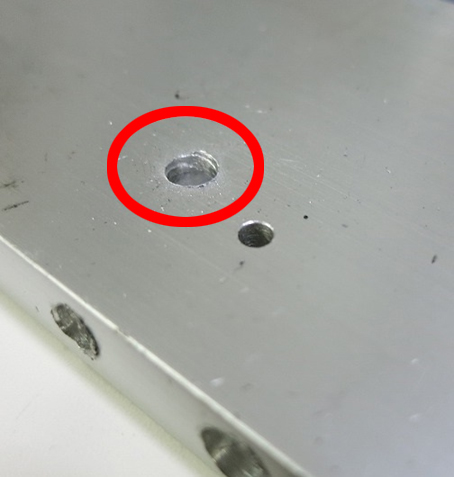
In the photograph above, foreign objects are adhered to the top (surface), middle, and bottom (near the base).
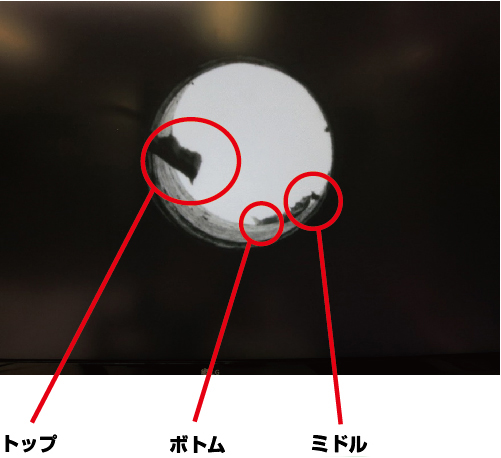
| To detect all of these, it is necessary to use a lens with an adjustable aperture. |
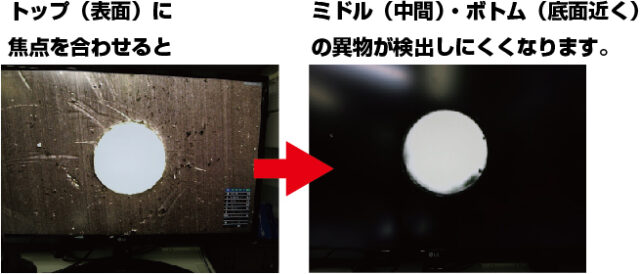
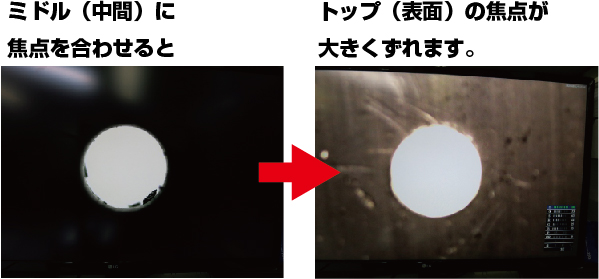
■ When using a lens with an open aperture
When focusing on the top (surface) with an open aperture lens, the observation appears as follows.

*The middle (intermediate) and bottom (near the base) sections become almost invisible.
When focusing on the middle section with an open aperture lens, the observation appears as follows.
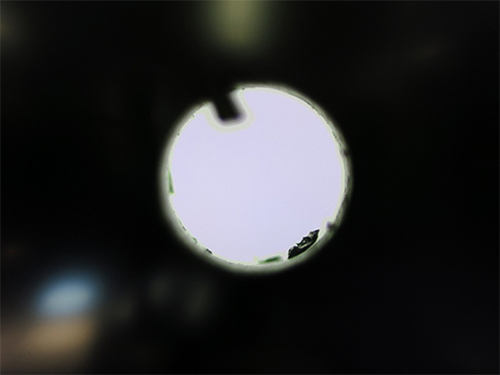
*The top is visible but appears thinner, while the bottom is very difficult to see.
■ When using a macro lens with an aperture control
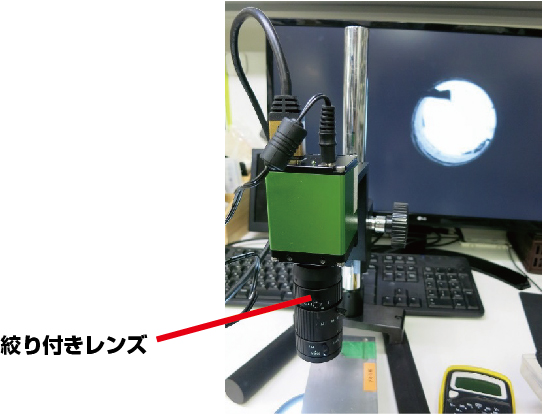
Shoot with the aperture as closed as possible. (Compensate for the resulting darkness with lighting, and keep the camera’s gain at about 90% instead of maximum.)
*The top (surface), middle, and bottom (near the base) can all be sufficiently observed.
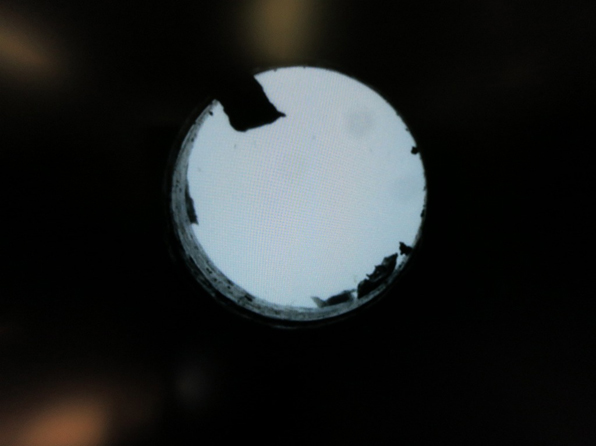
Summary
To observe burrs and foreign objects inside holes, it is necessary to use not only transmitted lighting but also a lens with an adjustable aperture that can increase the depth of field.



